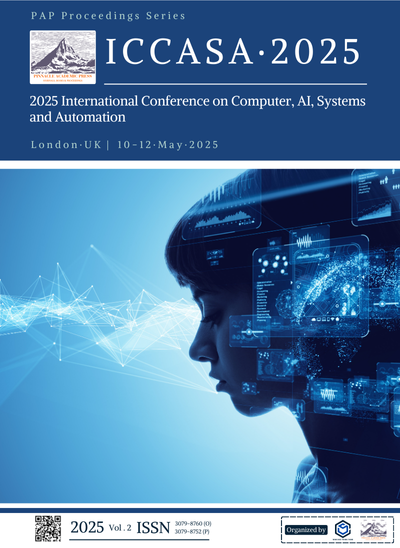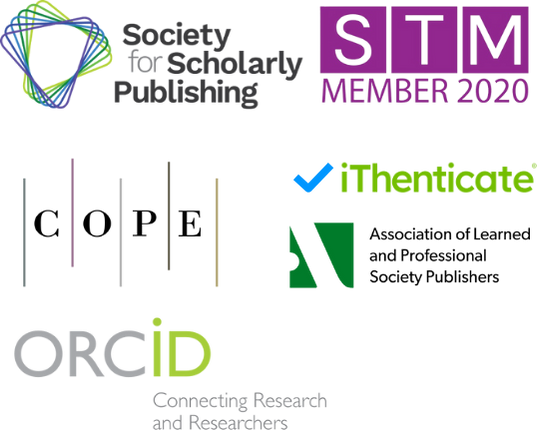APAC-Sensitive Anomaly Detection: Culturally-Aware AI Models for Enhanced AML in U.S. Securities Trading
Keywords:
cross-border anti-money laundering, culturally-aware artificial intelligence, financial anomaly detection, regulatory technologyAbstract
This paper presents a novel culturally-aware artificial intelligence framework for enhancing anti-money laundering (AML) detection in cross-border securities trading, specifically targeting Asia-Pacific (APAC) investors in US markets. Conventional AML systems struggle with high false positive rates when monitoring APAC investors due to legitimate cultural variations in trading behaviors being misclassified as suspicious. Our approach integrates region-specific cultural feature vectors within a hybrid machine learning architecture, enabling accurate distinction between legitimate cultural trading patterns and genuinely suspicious activities. The framework incorporates temporal clustering for time-zone specific behaviors, regional trading preference calibration, and adaptive threshold adjustment through reinforcement learning. Experimental evaluation using 3.7 million trading transactions from 42,856 APAC investors demonstrated significant performance improvements compared to conventional systems. Results show an average 17.4% improvement in F1-scores across APAC regions with false positive reductions of 48.6%, 44.2%, and 41.9% for Hong Kong, Singapore, and Australian investors respectively. The system maintains 98.7% regulatory compliance while reducing average transaction analysis time by 32.5%. This research addresses a critical gap in cross-border financial monitoring capabilities, enhancing detection precision without compromising regulatory requirements. The implementation strategies and cost-benefit analysis provide practical guidance for US financial institutions serving APAC clients.
References
1. J. Fan, T. K. Trinh, and H. Zhang, “Deep learning-based transfer pricing anomaly detection and risk alert system for phar-maceutical companies: A data security-oriented approach,” J. Adv. Comput. Syst., vol. 4, no. 2, pp. 1–14, 2024, doi: 10.69987/JACS.2024.40201.
2. D. Ma, M. Shu, and H. Zhang, “Feature selection optimization for employee retention prediction: A machine learning ap-proach for human resource management,” Appl. Comput. Eng., vol. 141, pp. 120–130, 2025, doi: 10.54254/2755-2721/2025.21789.
3. M. Li, D. Ma, and Y. Zhang, “Improving database anomaly detection efficiency through sample difficulty estimation,” Pre-prints, 2025, doi: 10.20944/preprints202504.1527.v1.
4. K. Yu, Y. Chen, T. K. Trinh, and W. Bi, “Real-time detection of anomalous trading patterns in financial markets using gen-erative adversarial networks,” Appl. Comput. Eng., vol. 141, pp. 234–243, 2025, doi: 10.54254/2755-2721/2025.22016.
5. W. Bi, T. K. Trinh, and S. Fan, “Machine learning-based pattern recognition for anti-money laundering in banking systems,” J. Adv. Comput. Syst., vol. 4, no. 11, pp. 30–41, 2024, doi: 10.69987/JACS.2024.41103.
6. S. Zhang, Z. Feng, and B. Dong, “LAMDA: Low-latency anomaly detection architecture for real-time cross-market financial decision support,” Acad. Nexus J., vol. 3, no. 2, 2024.
7. Z. Wang, X. Wang, and H. Wang, “Temporal graph neural networks for money laundering detection in cross-border transactions,” Acad. Nexus J., vol. 3, no. 2, 2024.
8. A. Kang, J. Xin, and X. Ma, “Anomalous cross-border capital flow patterns and their implications for national economic security: An empirical analysis,” J. Adv. Comput. Syst., vol. 4, no. 5, pp. 42–54, 2024, doi: 10.69987/JACS.2024.40504.
9. J. Liang, C. Zhu, Q. Zheng, and T. Mo, “Developing evaluation metrics for cross-lingual LLM-based detection of subtle sentiment manipulation in online financial content,” J. Adv. Comput. Syst., vol. 3, no. 9, pp. 24–38, 2023, doi: 10.69987/JACS.2023.30903.
10. Z. Wang and J. Liang, “Comparative analysis of interpretability techniques for feature importance in credit risk assessment,” Spectrum Res., vol. 4, no. 2, 2024.
11. B. Dong and Z. Zhang, “AI-driven framework for compliance risk assessment in cross-border payments: Multi-jurisdictional challenges and response strategies,” Spectrum Res., vol. 4, no. 2, 2024.
12. J. Wang, L. Guo, and K. Qian, “LSTM-based heart rate dynamics prediction during aerobic exercise for elderly adults,” Pre-prints, 2025, doi: 10.20944/preprints202504.1692.v1.
13. C. Ju and T. K. Trinh, “A machine learning approach to supply chain vulnerability early warning system: Evidence from U.S. semiconductor industry,” J. Adv. Comput. Syst., vol. 3, no. 11, pp. 21–35, 2023, doi: 10.69987/JACS.2023.31103.
14. X. Xiao, Y. Zhang, H. Chen, W. Ren, J. Zhang, and J. Xu, “A differential privacy-based mechanism for preventing data leakage in large language model training,” Acad. J. Sociol. Manag., vol. 3, no. 2, pp. 33–42, 2025, doi: 10.70393/616a736d.323732.
15. J. Zhang, X. Xiao, W. Ren, and Y. Zhang, “Privacy-preserving feature extraction for medical images based on fully homo-morphic encryption,” J. Adv. Comput. Syst., vol. 4, no. 2, pp. 15–28, 2024, doi: 10.69987/JACS.2024.40202.
16. B. Dong and T. K. Trinh, “Real-time early warning of trading behavior anomalies in financial markets: An AI-driven ap-proach,” J. Econ. Theory Bus. Manag., vol. 2, no. 2, pp. 14–23, 2025, doi: 10.70393/6a6574626d.323838.
17. W. Ren, X. Xiao, J. Xu, H. Chen, Y. Zhang, and J. Zhang, “Trojan virus detection and classification based on graph convo-lutional neural network algorithm,” J. Ind. Eng. Appl. Sci., vol. 3, no. 2, pp. 1–5, 2025, doi: 10.70393/6a69656173.323735.
18. G. Rao, T. K. Trinh, Y. Chen, M. Shu, and S. Zheng, “Jump prediction in systemically important financial institutions' CDS prices,” Spectrum Res., vol. 4, no. 2, 2024.
19. X. Xiao, H. Chen, Y. Zhang, W. Ren, J. Xu, and J. Zhang, “Anomalous payment behavior detection and risk prediction for SMEs based on LSTM-attention mechanism,” Acad. J. Sociol. Manag., vol. 3, no. 2, pp. 43–51, 2025, doi: 10.70393/616a736d.323733.
20. T. K. Trinh and Z. Wang, “Dynamic graph neural networks for multi-level financial fraud detection: A temporal-structural approach,” Ann. Appl. Sci., vol. 5, no. 1, 2024.
21. S. Ji, Y. Liang, X. Xiao, J. Li, and Q. Tian, “An attitude-adaptation negotiation strategy in electronic market environments,” in Proc. 8th ACIS Int. Conf. Softw. Eng., Artif. Intell., Netw., Parallel/Distrib. Comput. (SNPD), Qingdao, China, 2007, pp. 125–130, doi: 10.1109/SNPD.2007.26.
22. T. K. Trinh and D. Zhang, “Algorithmic fairness in financial decision-making: Detection and mitigation of bias in credit scoring applications,” J. Adv. Comput. Syst., vol. 4, no. 2, pp. 36–49, 2024, doi: 10.69987/JACS.2024.40204.
23. X. Liu, Z. Chen, K. Hua, M. Liu, and J. Zhang, “An adaptive multimedia signal transmission strategy in cloud-assisted ve-hicular networks,” in Proc. 5th IEEE Int. Conf. Future Internet Things Cloud (FiCloud), Prague, Czech Republic, 2017, pp. 220–226, doi: 10.1109/FiCloud.2017.42.
24. X. Xiao, Y. Zhang, J. Xu, W. Ren, and J. Zhang, “Assessment methods and protection strategies for data leakage risks in large language models,” J. Ind. Eng. Appl. Sci., vol. 3, no. 2, pp. 6–15, 2025, doi: 10.70393/6a69656173.323736.
25. Z. Wang, M. Zhang, R. G. Baraniuk, and A. S. Lan, “Scientific formula retrieval via tree embeddings,” in Proc. IEEE Int. Conf. Big Data, Orlando, FL, USA, 2021, pp. 1493–1503, doi: 10.1109/BigData52589.2021.9671942.
26. M. Zhang, Z. Wang, R. Baraniuk, and A. Lan, “Math operation embeddings for open-ended solution analysis and feedback,” arXiv Prepr. arXiv:2104.12047, 2021, doi: 10.48550/arXiv.2104.12047.
27. D. Qi, J. Arfin, M. Zhang, T. Mathew, R. Pless, and B. Juba, “Anomaly explanation using metadata,” in Proc. IEEE Winter Conf. Appl. Comput. Vis. (WACV), Lake Tahoe, NV, USA, 2018, pp. 1916–1924, doi: 10.1109/WACV.2018.00212.
28. M. Zhang, T. Mathew, and B. Juba, “An improved algorithm for learning to perform exception-tolerant abduction,” in Proc. AAAI Conf. Artif. Intell., vol. 31, no. 1, 2017, doi: 10.1609/aaai.v31i1.10700.
Downloads
Published
Issue
Section
License
Copyright (c) 2025 Dongchen Yuan, Daiyang Zhang (Author)

This work is licensed under a Creative Commons Attribution 4.0 International License.



